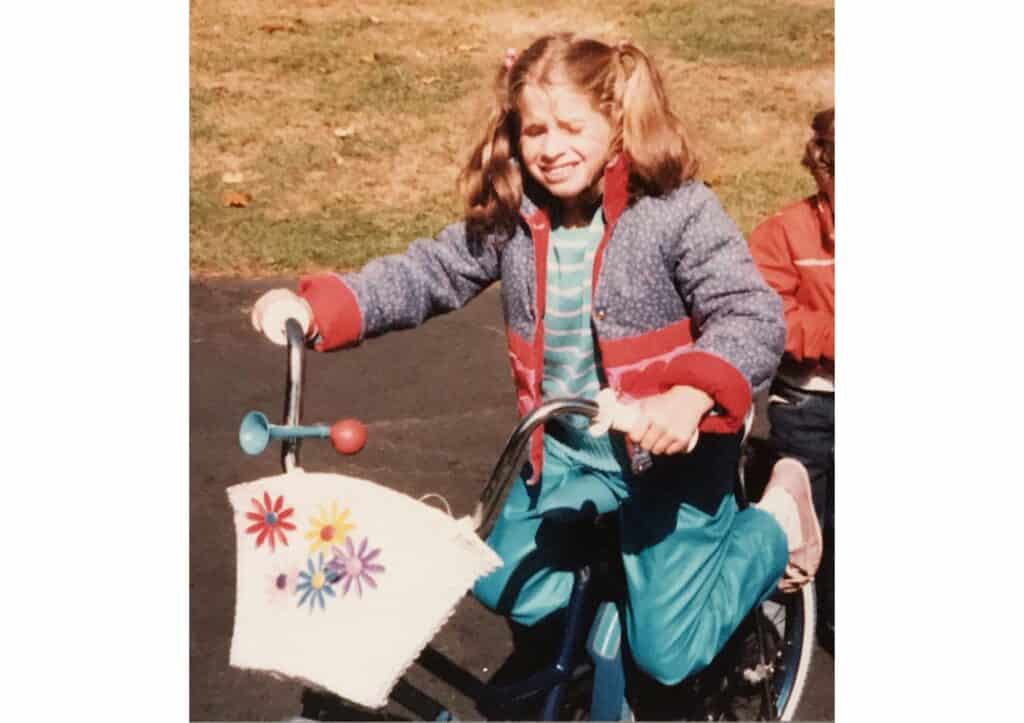Winter Bike Commuting Guide: How to Stay Warm and Happy
While it’s easy to miss the fact that I run in the winter (it’s dark so I rarely have photos), it’s a bit harder to miss me riding my bright orange bike around town and to Northstar any day the roads are clear.
While I normally stow my bike away for the winter and do my part to reduce pollution by riding the bus, last year, Covid didn’t leave me too excited to ride public transportation. So I figured why not try to ride my Rad Wagon ebike?
Now that I started and figured out all my systems, it’s easy to keep riding as part of my everyday routine.
Plus, winter weather has never deterred me from skiing, running, or swimming in Lake Tahoe, so why should biking be any different? Besides the obvious danger of ice on the roads, which I avoid by only going out on dry road days, it’s just as safe as summer riding. Maybe more so, since you’re unlikely to be caught and soaked in a surprise thunderstorm.

The essential winter biking commuting gear
We’ll work from the feet up.
Socks – as thick as you can manage in your boots. Since I’m often riding to go ski at Northstar or Tahoe Donner Cross Country, I layer with my thick synthetic socks over thin ski socks.
Boots – any kind as long as they are windproof and cover up any gap that could exist between your boot and the bottom of your pant legs. I wear my Altra Lone Peak 4 Mid RSMs but really any snow boot should work.
Long underwear – I find that whatever I am going to wear skiing that day is perfect for biking. It ends up being something between silkweight and expedition weight or some combination thereof.
Ski pants – While not the most comfortable for riding, they keep me very warm and keep the wind out.
Top base layer – A long underwear top, thickness depending on how cold the day is.
Nano puffy jacket – any kind of lightweight, fitted synthetic layer will do.
Big puffy jacket – your biggest, warmest layer.
Wind layer – I have a Patagonia Houdini that is super lightweight and packs down tiny.
Heated gloves or mittens – I seriously don’t know how I could ride without these. They are the most essential piece of my kit. I have mittens and they fit well enough that I can easily use the brakes. For warmer days a glove liner and ski glove would work.
Overmitts – These attach to your bike handlebars and are a less expensive solution than heated mittens or gloves.
Buffs galore! – I am usually wearing 3 or 4 since I layer them up. Two for my neck and face and another two over my head and ears. I think before Covid, I never would have wanted something over my nose and mouth, but I pull those buffs all the way up on the coldest days now! Once I start to warm up and see a little bit of fog on my glasses, I pull them off my nose.
Hat – a fitted hat that comes down over the ears would probably be better than my two buff solution.
Glasses – Since I am commuting to work, it’s usually pretty dark, so I go with clear lenses. While I used to think they were for keeping the bugs out of my eyes, now they are so I don’t freeze my eyeballs!
Helmet – Goes without saying, of course!

Other winter bike commuting gear considerations
Front bike light – our winter days are short!
Rear blinking light – for safety, night and day.
Studded tires – I go without, but only because I stick to the days where the road conditions are prime!
Reflective vest or other top visibility layer – night or day and especially in the morning fog.
Your lock – is it easy to work with cold hands? Does it use a key, which means it could freeze up easily? I absolutely cannot use my coiled lock in the winter. It becomes frozen in its coiled shape and it’s a battle to uncoil it. Instead, I go with a less compact but much easier to manage one.

Tucking stuff in and other cold breeze avoidance tips
In gearing up, I have one main thing I think about: avoiding cold breezes. That means that all gaps between clothing must be sealed up! Especially anything that could cause an ice cream headache!
Every single place where one piece of gear ends and another begins, I make sure the overlap is bomber. That means that my long underwear is tucked into my socks, that my ski pants are long enough to cover the top of my boots, that all my shirts are tucked into my pants, that my mittens have big cuffs and elastic to seal over my jacket and that I have buffs covering pretty much everything on my head and neck.
And with that, I’m ready for a winter of bike commuting and I hope you are too!
Disclosure: Some of the links in this post are affiliate links, meaning, at no additional cost to you, Tahoe Mountain Sports will earn a commission if you click through and make a purchase. Affiliate commissions help fund the content for this blog.



Leave a comment